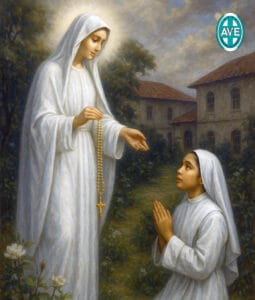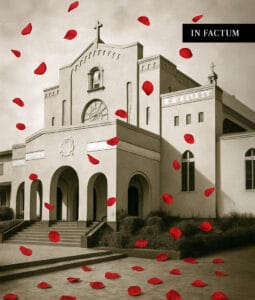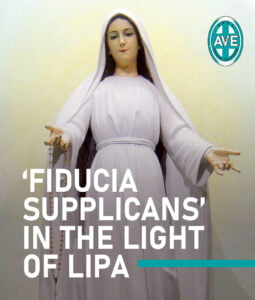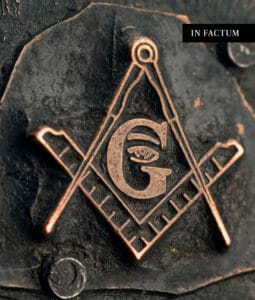After the first encounter, the pain or skin irritation (contact dermatitis) can come back months or even years after especially if not all the dense hair or trichomes which are invisible to the eyes are not totally removed by wax treatment.
Before Lipa became a pueblo, it started out as a mission named in honor of St. Sebastian the martyr who endured the arrows per command of the emperor.
The prickly tale however states that the miraculous image of the martyr was stolen by a group of thieves who would like to use its power for unholy reasons but was later retrieved under the Lipa tree or vine. Apparently, the thieves were not shot by a volley of arrows but were instead exposed to the poisonous hair of the Lipa. As a token of thanksgiving, the people of San Sebastian named the growing community Lipa with the martyr still honored as its patron.
After liberica coffee seeds were brought there, prosperity came to Lipa and it became famous for the coffee which was exported worldwide. However, the boom and the ostentatious living had to stop after other countries offered stiff competition to the Villa de Lipa coffee. The agitation after the coffee debacle had to be remedied with the industrious people going into other sources of livelihood.
In 1948, another kind of agitation was felt in the heart of Lipa. In the Carmel monastery, one of the postulants, Teresita “Teresing” Castillo was first tormented by the devil and later saw the Virgin Mary who at first communicated to her via her voice. Moreover, there were showers of rose petals which fell from nowhere and on these curative petals were religious pictures. Even the local prelates who were at first hesitant or unbelieving became believers in no time making the local population more attuned to the reality of the apparitions.
But when the apostolic delegate, Egidio Vagnozzi came to investigate, it seemed that he had already a negative conclusion that the said apparitions are not supernatural in nature and therefore not worthy of belief. Towards his own personal inclination, and believing that an all-Filipino committee would be more credible, he ordered Rufino Santos to form a six-man Special Ecclesiastical Commission to investigate the events. For the record this Italian delegate did not even try to investigate the bishop and the apostolic administrator who were sympathetic to the alleged visionary but simply dismissed and replaced them to be assigned safely out of jurisdiction. I am citing here Bishop Alfredo Florentin Versoza who founded the Missionary Cathechists of the Sacred heart and Bishop Alfredo Maria Aranda Obviar who established the Missionary Cathechists of St. Therese who are both credible witnesses. Rufino Santos who was obviously promised becoming a cardinal handpicked bishops who could be influenced by simply deigning obedience to the Pope as Vagnozzi postured. The result was that after six hours of conference, the special committee came to the negative conclusion.
Lipa Apostolic Administrator Santos lost no time in suppressing the local devotion. He ordered that all printed material favorable to the apparitions, rose petals, and other relevant paraphernalia burned. He even ordered that the image of Our Lady, Mediatrix of All Grace as the visionary had seen to be also burned but the two nuns no longer had the heart to do so and instead kept the image which has now come to be venerated in our time.
Mother Cecilia, the prioress, who believed in the apparition was immediately relieved and sent to the Jaro Carmel where she instead made a scullery maid. Even the monastery infirmarian was sent to Laoag. Practically, all the nuns were hamletted so that they could not communicate with the public. But the worst punishment was given to the alleged visionary because she was sent home because “she did not meet the requirement of a postulant” of staying one year straight. But Teresing could not possibly do that because she was always sent out for medical reasons and especially because she was being investigated elsewhere. The investigation made by pioneering Dominican psychologist Angel de Blas finds her “authentic visionary” which implies that the visions were authentic. But it was only in Mother Cecilia de Jesus where some behavioral problems manifested. In fact, the SEC 1951 sent by Fernandez attached her letter of confession where she admitted making deception on the alleged apparitions. The psychologist could have determined the reason for the flaws had he been given the chance to know that the prioress was under threats of excommunication if she will not obey Vagnozzi and Santos. It wouldn’t be easy for a prioress to be excommunicated and publicly humiliated.
The SEC (Special Episcopal Commission) of 1951 was also instrumental for the future Archbishop Santos to suspend all religious activities related to or appertaining to the Lipa apparitions pending “final approval of the Holy See”. But this was also the problematic part caused by the then Lipa bishop because after his communication the church hierarchy had been silent about Lipa. Meanwhile, the devotees of Lipa agitated because they were told to discontinue the veneration of Our Lady as Mediatrix of All Grace. The agitation was valid because the long wait continued even beyond sixty years! Seeing that there was no valid document which was meant to stop the devotion the then Archbishop Ramon Arguelles, the good bishop who was also outspoken against the prohibitions made on the much-needed processions and especially masses to stem the tide of COVID 19 promptly declared the Lipa apparitions supernatural and worthy of belief.
Cardinal Gerhard Muller using the same questionable documents made the official Congregation for the Doctrine of Faith (CDF) response by nullifying the positive actions taken by the Filipino Archbishop of Lipa in 2016 causing the latter to retract his decision out of obedience. But the Filipino people continued to agitate such that Bishop Pablo Virgilio David, CBCP President, had to ask once more seeking pertinent proofs. After decades of being mum, the Dicastery for the Doctrine of faith (DDF) suddenly awoke to respond to the Filipino faithful. Victor Manuel Cardinal Fernandez, who was remembered for writing lewd poetry as a priest, answered this time for the Dicastery for the Doctrine of Faith (2024) hoping to end the controversy. However, Fernandez’ reply only prove that there was indeed something wrong in reiterating the negative decision.
Let us enumerate some of them. I personally feel uncomfortable about the fact that the “L” Ottaviani in the smudged stationery is in fact Alfredo Cardinal Ottaviani who is well known conservative and famous for the Ottaviani Intervention which questioned the implementation of the Novos Ordo mass. He must have been chosen to represent the official objection because he was indeed a tough hardliner like in the case of his objection to the Divine Mercy claims from Poland which John Paul II championed. But the “L” is out of place and must be representing a big lie. Besides, in that year, 1951, the one who should be doing that representing the Holy Office is not supposed to be Ottaviani but Giuseppe Pizzardo who was Secretary of the Holy office from 1951 to 1959. Ottaviani only came in 1959 and he was not therefore the one supposed to be in charge of expressing a Papal will especially in a smudgy note. Furthermore, the stationary already used the dicastery stationary whereas the DDF (Dicasteria Pro Doctrina Fidei) was not yet in existence in 1951 which was still the Suprema Sacra Congregatio Sancti Officii. If the stationary was authentic it should have those words.
I am indebted to Peter I. Galuce of San Narciso, Zambales who observed that there was no decree concerning the Lipa apparitions in the Acta Apostolica Sedis which should have recorded the official act of the Pope, Now, since there was no official act or decree, the protocol sent by Cardinal Fernandez can not be an official or final resolution coming from the Vatican. the attachment of the prioress’ confession is immaterial. In fact, let me state that the Prioress returned to Lipa Carmel in 1963 from Jaro and she died there. Before her death in 1982, she requested that the image of Mary, Mediatrix of All Grace could be venerated publicly once more which was granted by the Bishop for as long as the veneration had nothing to do with the apparitions. Michael O’Neill find it very interesting that this is a “singular case” wherein public veneration is allowed despite a negative judgment. Could also be a manifestation that “vox populi, vox Dei”.
Galuce also noticed that Vagnozzi’s Special Commission’s process of investigation was 1) metaphysically impossible, 2) a massive lie and 3( in itself a miracle to accomplish. He keenly observed that the six did not really represent the real Filipino priesthood’s sentiment at that time. One must remember that the Lipa archbishop and his auxiliary were both transferred so that they can no longer have any jurisdiction on the Lipa apparitions whatsoever. An investigation was already in process at that time which was being properly conducted but Vagnozzi ignored this. His decision was rash and discriminatory at the same time. It was obvious that Vagnozzi perceived that Versoza and Obviar may be both believers. Giving threats of excommunication and offering better positions (my opinion) the resulting decision can only be a “massive lie”.
In fact, some bishops later admitted having signed the negative decision under duress such as Bishop Guerrero and Archbishop Sison. The Guerrero and Pedernal affidavits manifest this fact. The decision was made after a duration of only six hours. Mr. Dychangco’s interview with Msgr. Vicente Reyes clearly depicts this short time engagement.
But more incisive was Galuce’s analysis of the application of the Canon Law in this regard. Canon 8 of the 1917 Code of Canon Law expresses the fact that there should have been a publication first, or the decree and official action of the Pope which should have reached the Filipino faithful so that they can properly be informed but there was none and so, there was nothing to promulgate or to put such an act in effect. The same is expressed by the 1983 Code of Canon Law. Pope Pius XII died in 1958 without having issued such a decree and therefore no negative decision had been really enacted. It behooves one to think that Bishop Arguelles’ pronouncement that the Lipa apparitions were supernatural in origin and worthy of belief is in order and therefore the correct decision.
The famed Harriet Demetriou’s critique of the Fernandez reply particularly the Ottaviani note was most devastating as enumerated here; 1) the identity of L. Ottaviani isn’t established as to what his authority is to make the decision equal to a papal decree, 2) there should be an attachment of the Papal Decree, 3) the authentication of Cardinal Fernandez does not bear his signature and the official reply should have a formal consular form as Vatican and the Philippines have consular relations, 4) the alleged decision does not have the express approval of Pius XII who was Pope then, 5) 72 years is too long a time for the Dicastery to release a formal decision; the faithful in Lipa had to suspend their devotional inclinations after Msgr. Santos quoted the pending decision of the Pope, 6) the 1951 decision is not published in the Acta Apostolica Sedis as required by Canon Law for promulgation, 7) it can not be assumed that negative decisions are not published, because there a published negative verdict of the same Pope on the Heroldsbach Marian apparitions in July of the same year, and 8) she had to see first the required papers before she can have a judgment on the matter.
What could Egidio Vagnozzi and Rufino Santos say concerning the matter? It would be uncharitable to think that both deliberately made the great communication gap possible so that people will be misled and henceforth sanitize a crime. They are no longer alive to tell us what really transpired then just like the members of the six-man commission and the people who were oppressed because of their efforts. Vagnozzi died suspiciously (please read Murder in the Vatican by Lucien Gregoire ) even before he could be audited concerning the Vatican financial crisis scandal as Prefect for Economic Affairs. Santos, who turned to be a good administraitor (I misspelled, sorry) died because of brain tumor. No Catholic would ever believe that they paid karmic debt as karma is not a Christian doctrine. But somehow, they should atone for their sins. I’m glad that I do not hold any high or holy office or title, as I’m just a common man who can easily pass judgment and people wouldn’t mind what I have said.












